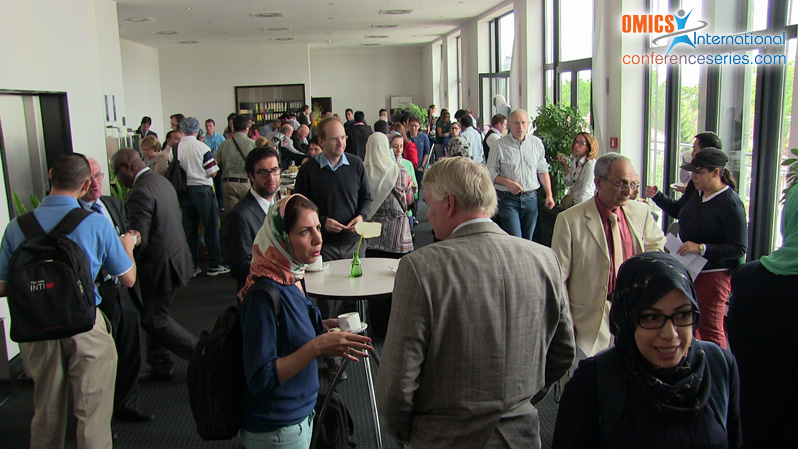
C J Andrade
State University of Campinas, Brazil
Title: Surface activity of surfactin under extreme conditions (pH, temperature and ionic strength): A prospection for microbial enhanced oil recovery
Biography
Biography: C J Andrade
Abstract
Petroleum has been playing the most important role in energy sectors. Worldwide oil production has been declining. The primary and secondary techniques of oil recovery, reach ≈35% and ≈20%, respectively. Thus, the aim of enhanced oil recovery technologies is the residual oil, which is ≈45% of the total oil reserves. Microbial-enhanced oil recovery (MEOR) is one of the most important tertiary recovery processes, which rise up the oil recovery ≈3%. However laboratory scale experiments predict up to 10%. The aim of this work was to evaluate the surface activity of surfactin under extreme conditions (pH, temperature and ionic strength) - individually and their interactions – which represents similar environmental of wells. The surface activity of surfactin under extreme condition was already reported. Although, for the best of our knowledge this is the first study that focused on the biosurfactants surface activity under extreme condition at the same time, which is fundamental for MEOR. Surfactin was produced at bioreactor scale (7.5L) using cassava wastewater as substrate. Then, surfactin was collected from the top of bioreactor centrifuged, precipitated (pH 2) and purified by solvent extraction and ultrafiltration. The final product was named produced surfactin and used in the experiments at 74 mg.L-1 of surfactin. The ionic strength was tested using synthesized brine. The pH, temperature and ionic strength were first investigated separately, in which the pH was evaluated from 2 to 12, whereas 3 temperatures were tested during 1h, 79, 100 and 121oC and finally the ionic strength 2.5, 5, 10 and 20 g.L-1 of synthesized brine. Then, were measure surface tension (ST) and its critical micelle dilutions (CMD). Thereafter, central composite design (CCD) experiments evaluated the interactions of temperature, pH and ionic strength. The ionic strength affected the surface activity property of surfactin, in which the higher ionic strength, the higher was the surface tension measurements (ST and CMD). The intermediate pH (4-8) showed highest (best) surface activity. No significant differences were observed for the thermal treatments. Therefore, temperature, pH and ionic strength experiments were aligned with the maintenance of surface activity properties of produced surfactin, which suggest their potential application at extreme systems, in particular MEOR. Regarding to CCD of surfactin, the ANOVA of CMD-1 indicated that temperature, pH and ionic strength were statistically different (95%) with r2 of 0.76. Thus was generated the equation 1: [Y = 67.28 + 8.5 x (ionic strength) – 3.02 x (ionic strength)2]. The ionic strength was the most significant parameters on the surface activity, in which threshold of surface activity of surfactin was at 18.58 g.L-1. The validation (72.17 mN.m-1) was well-aligned to the predicted value (73.26 mN.m-1). Therefore, it seems feasible consider surfactin in MEOR, in which ionic strength is the most important parameter.


